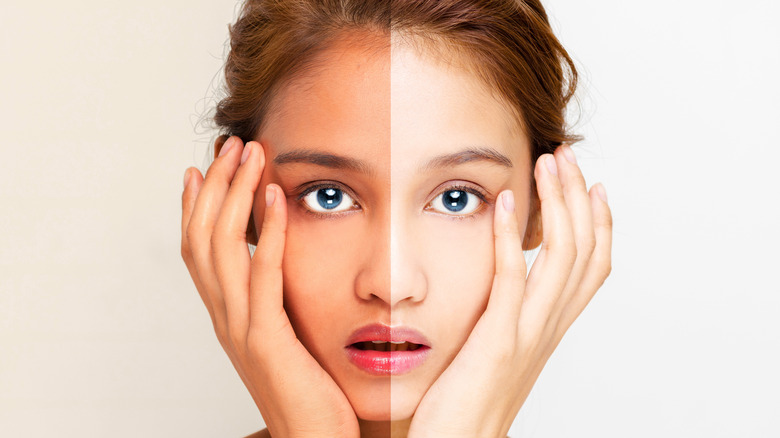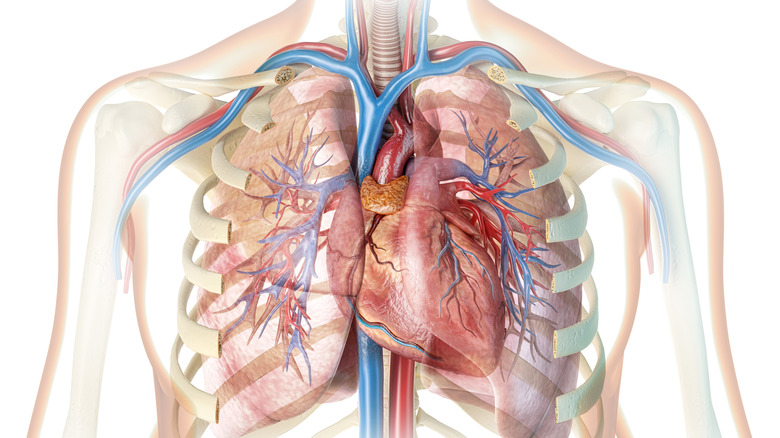Why Are Our Bodies Asymmetrical?
Have you ever noticed that one eye looks slightly different from the other? Or that one leg is a tad longer? These are small reminders of the body's asymmetry. Beauty standards tend to favor symmetrical facial features, regardless of culture or time period (per Psychology Today). However, asymmetry is completely normal, and Healthline notes that most people have at least some facial asymmetry.
Other body parts also tend to be slightly different between the left and right sides. For example, a 2018 study published in the Journal of Healthcare Engineering says that leg length discrepancy (where one leg is longer than the other) occurs in 40% to 70% of people. Additionally, a 2006 study published in the journal Plastic and Reconstructive Surgery found that 88% of women had some degree of breast asymmetry before undergoing breast augmentation surgery.
Besides what you can see on the outside, the inside of the body is also highly asymmetrical. If you look at a diagram of the human body, you'll notice the heart, lungs, liver, and other key organs lack symmetry.
In short, the left and right sides of the body aren't the same, nor are they designed to be. Here's why the human body develops in an asymmetrical pattern.
The human body develops asymmetry early
Your body may become slightly asymmetrical as you age from regular wear and tear and other factors. But much of your body's asymmetry already existed before you were even born. A 2018 study published in Science discovered that one protein, called "Myo1D," is responsible for developing the body's left-right asymmetry. The mechanism that ultimately breaks the body into two halves involves the node of an embryo, which is lined with rotating cilia, explains a 2012 study published in Nature Communications. Just two of these whirling cilia are enough to divide the embryo into differing left and right sides, which ultimately determines the body's asymmetry as it continues forming.
Even if the human body is designed to be asymmetrical, too much asymmetry can sometimes result in problematic health conditions. One example is hemihyperplasia, a disorder where one side of the body continues growing, becoming enlarged compared to the other side (per Healthline). Individual body parts, such as the jaw, may also suffer from abnormal asymmetry. A 2021 research review published in the Journal of International Society of Preventive & Community Dentistry found that an uneven jaw can lead to functional issues, including jaw disorders and facial pain.


